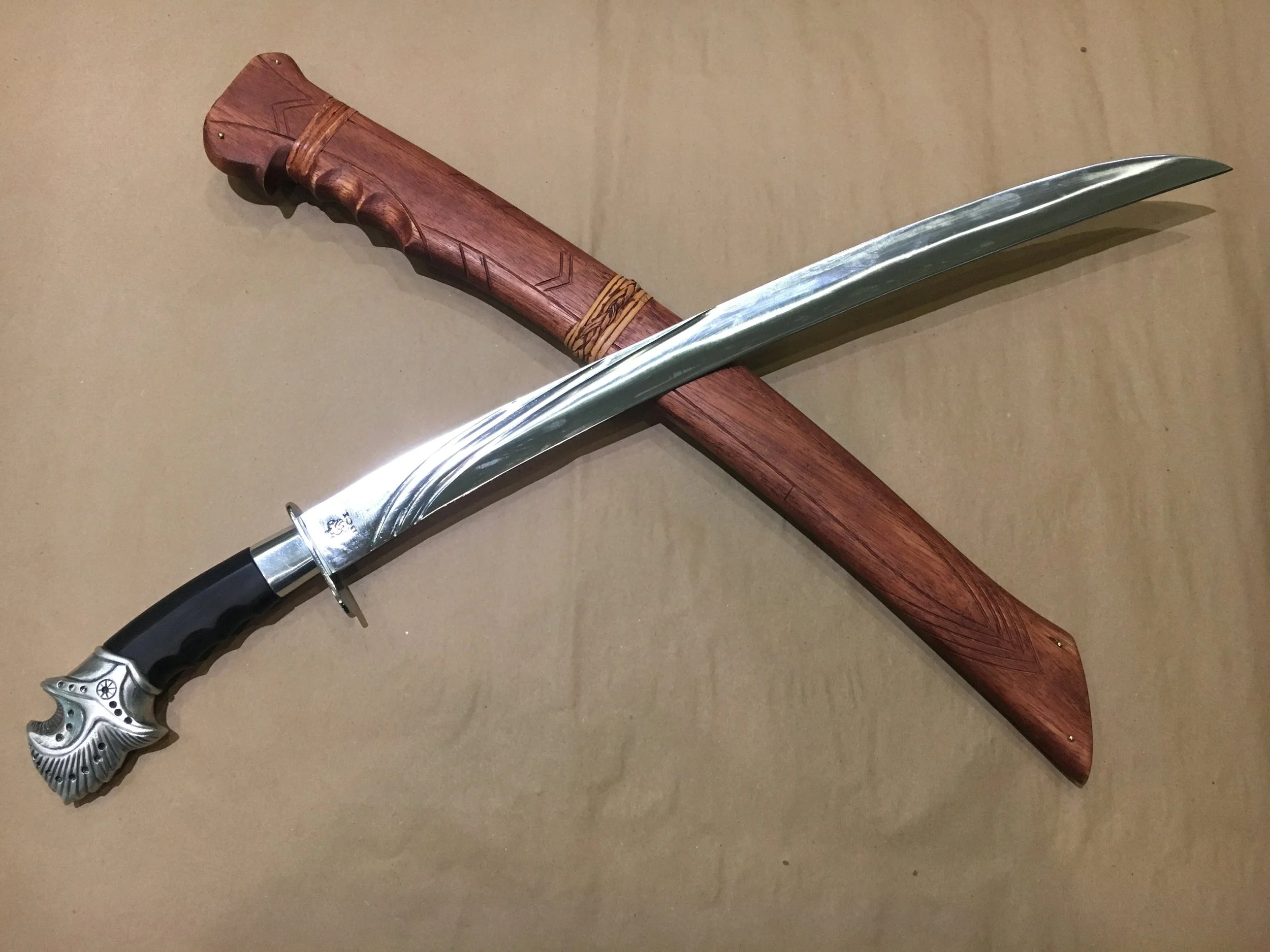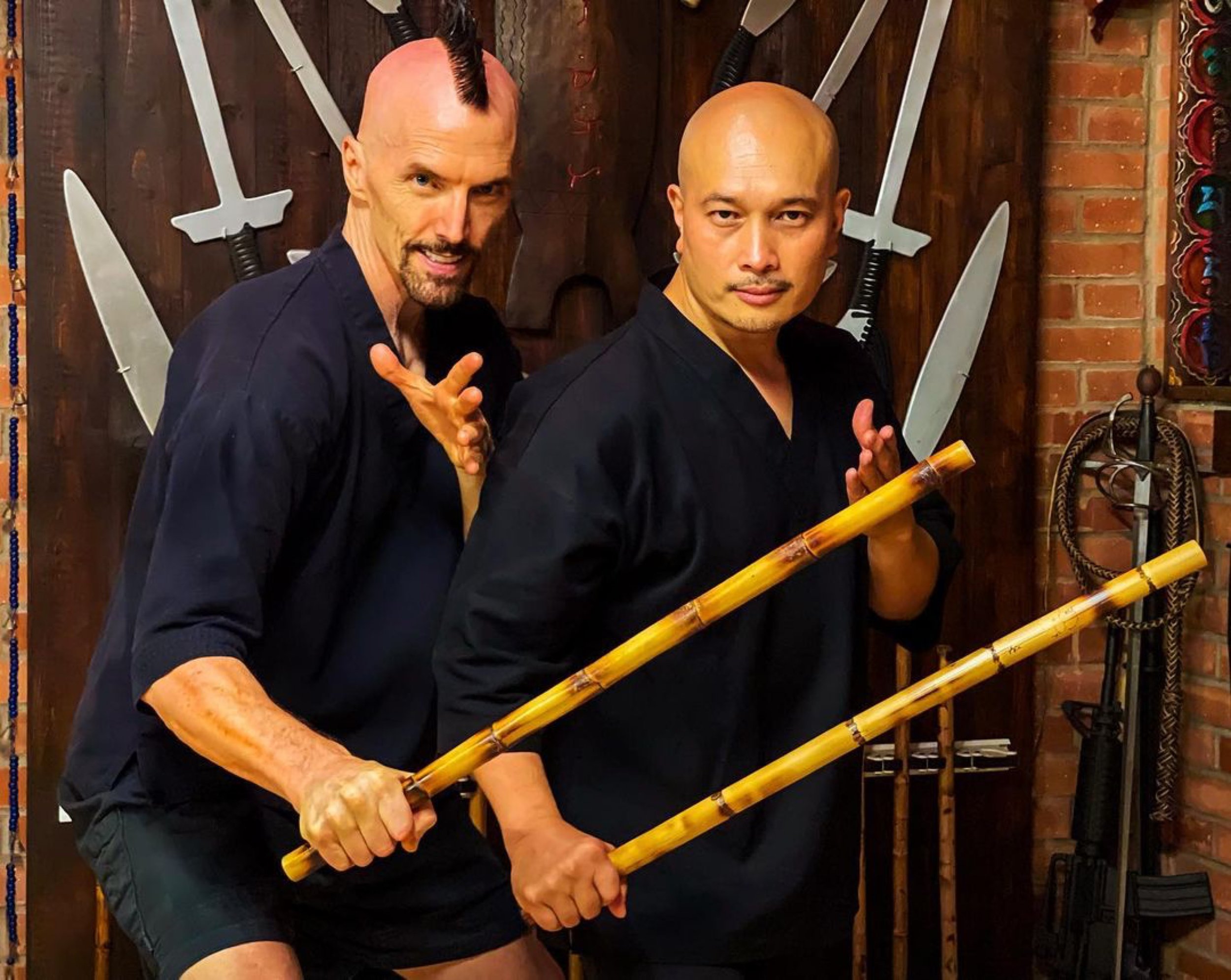Visit us in the Ancestral Pavilion
Kris
The kris/kalis/keris is a blade that originated from the precolonial island region in the south china sea. During the Majapahit empire cultures intermingled through trade. This is how the iconic wavy blade made it to the philippines. The Kris is the most common Moro sword found in Sulu & Mindanao. The Kris sword is extensively used by the Tausug, Samal and Yakan warriors.
Kampilan
The Kampilans most distinguishing characteristic is its size. At about 36 to 40 inches (90 to 100 cm) long, it is much larger than other Filipino swords. The design of the pommel can vary between ethnic groups, but it usually depicts either a buaya (crocodile), a bakunawa (sea serpent), a kalaw (hornbill), or a kakatua (cockatoo).
Kalinga Axe
Commonly referred to as the Kalinga head axe, it derives from people whose ancestral domain is in the Cordillera Mountain Range of the northern Philippines. The Ibanag and Gaddang term kalinga, means headhunter.
Igorot Spear
The Igorot spear, also known as the "balbeg" or "gayang," is a traditional weapon from the northern tribes of the Cordillera region, particularly the Igorot people. This spear was used for hunting and in warfare, where its versatility allowed warriors to throw it or use it in close combat. The spear typically features a wooden shaft and an iron tip, with some variations depending on the specific tribe. It holds great cultural significance in headhunting practices and ritual ceremonies, symbolizing bravery and skill in battle.
Moro Armor
Moro armor, traditionally worn by the Moro people of Mindanao, was designed for protection in battle, combining strength and mobility. It was made from materials such as brass or iron plates with chainmail or padded underlayers for flexibility. The design of the armor often varied between different ethnic groups, but it was typically lightweight compared to European armor, allowing for quick movements. The intricate craftsmanship reflects the rich cultural history of the Moro warriors, with some armors decorated with motifs symbolizing rank, status, and tribal affiliations.
Espada y Daga
Espada y Daga is a Filipino martial arts technique that involves the use of a sword (espada) in one hand and a dagger (daga) in the other. The combination allows for simultaneous offense and defense, with the sword used to strike or parry, while the dagger provides quick stabs or blocks. This pairing originates from the Spanish colonial influence, blending with indigenous Filipino techniques to create a highly effective and fluid style of combat. It remains a core aspect of traditional Filipino martial arts (FMA) training.
Ginunting
The Ginunting is a short sword used by the Philippine Marine Corps and some indigenous tribes in the Visayas and Mindanao. Its unique forward-curving blade is designed for slicing and chopping motions, making it effective in close-quarters combat or jungle environments. The blade length is usually around 24 to 28 inches, and its design ensures balance, speed, and precision. Traditionally, the ginunting is used for both agricultural and martial purposes, reflecting the dual nature of many Filipino weapons.
Karambit
The karambit is a small, curved blade that originated in Southeast Asia, widely used in Filipino martial arts. Its design mimics the claw of a tiger, with a sharp, curved blade and a finger ring on the handle for added control and retention. It was traditionally used as a farming tool for harvesting crops but became a versatile weapon due to its stealth, precision, and ability to deliver slashing strikes. The karambit is favored for close combat and is a staple in Filipino knife-fighting techniques.
Balisong
The Balisong, also known as a butterfly knife, is a folding pocket knife that originated in the Philippines, particularly in Batangas. Its signature feature is its two handles that rotate around the blade, allowing it to be quickly concealed or deployed. The balisong was used both as a utility tool and a self-defense weapon. Skilled practitioners can manipulate the knife with rapid, flashy movements, making it an iconic element of Filipino culture and martial arts.
Kamagong Stick
The Kamagong stick is a heavy, dense hardwood weapon used in Kali. Also known as "ironwood," Kamagong wood is highly prized for its strength and durability, making these sticks formidable in combat. Due to the hardness of the wood, Kamagong sticks are often used for training or as ceremonial weapons rather than sparring, where softer woods like rattan are preferred to prevent injury.
Rattan Stick
Rattan sticks are the most common weapons used in Kali, valued for their lightweight yet durable nature. Made from the fibrous rattan palm, these sticks are perfect for full-contact training, as they are flexible enough to absorb shock without breaking easily. Typically around 28 inches long, they are used in drills, sparring, and demonstrations of traditional Filipino martial arts. Their ability to withstand rigorous use makes them ideal for practitioners seeking to develop speed, accuracy, and striking power.
Narra Stick
The Narra stick, made from the tough yet flexible wood of the Narra tree, is another weapon used in Kali. Although not as hard as Kamagong, Narra sticks provide a balance of strength and weight, making them suitable for training and combat. The Narra tree is the national tree of the Philippines, and its wood is symbolic of resilience and strength in Filipino culture. Narra sticks are less common than rattan but are still favored for their durability and cultural significance.












